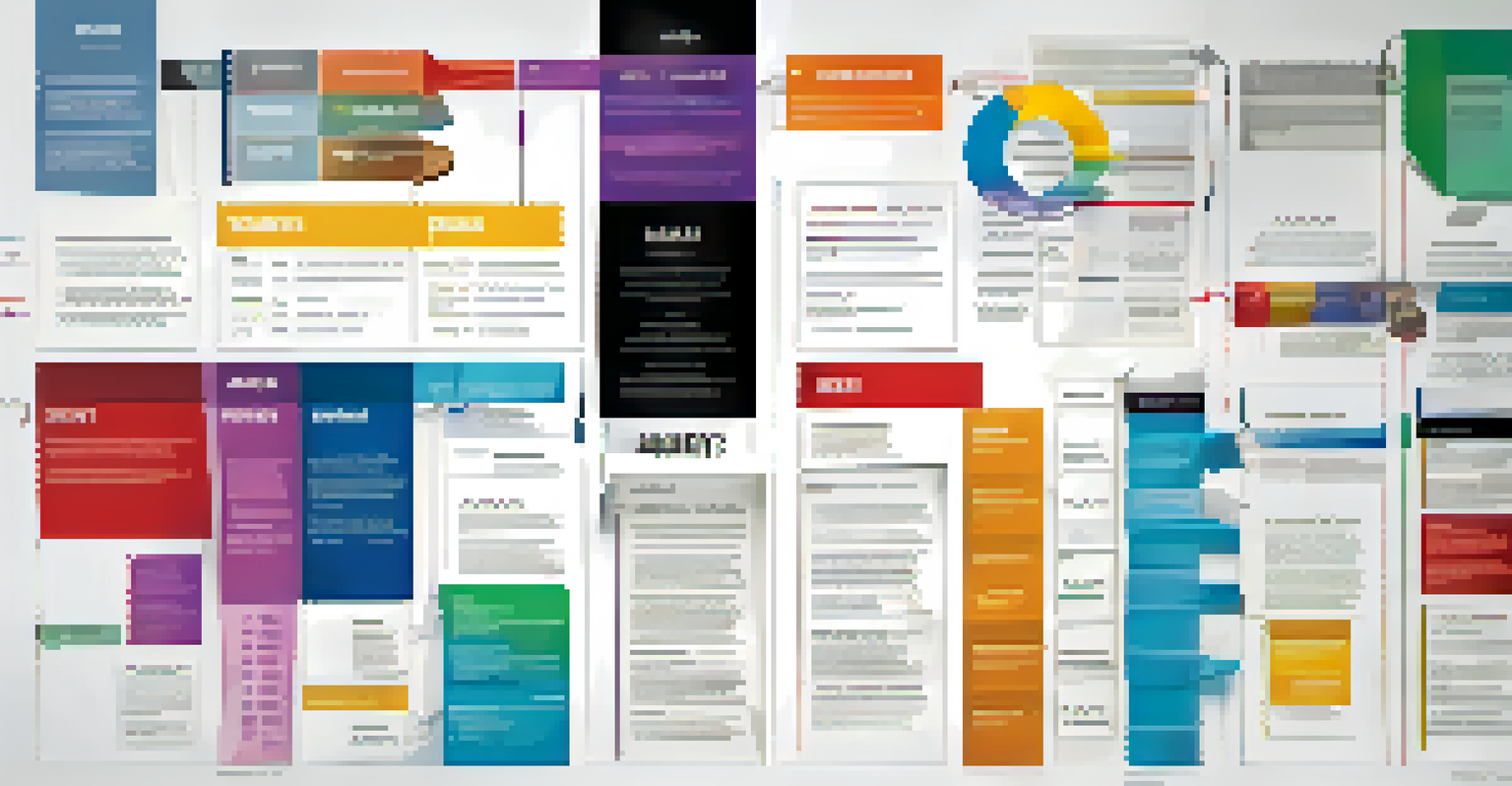Common Resume Formats: Which One is Right for You?

Understanding the Importance of Resume Formats
When applying for jobs, your resume is often the first impression you make. It's crucial that this document not only highlights your skills and experiences but also presents them in a format that's clear and appealing. The right resume format can set you apart from other candidates and help you get noticed by recruiters.
Your resume is a marketing tool to sell your skills and experience.
Different formats cater to various career stages and industries. For instance, a recent graduate might lean towards a functional format to emphasize skills, while an experienced professional may favor a chronological layout to showcase their job history. Choosing the right format can accentuate your strengths and align with industry expectations.
Ultimately, understanding the nuances of each resume format can empower you to present yourself effectively. A well-structured resume can not only grab attention but also convey your unique professional narrative. Let's dive into the common formats and see which might be the best fit for your career journey.
Chronological Resume: The Traditional Choice
The chronological resume format is the most commonly used and is often favored by employers. This type of resume lists your work experience in reverse chronological order, highlighting your most recent positions first. It's an excellent way to showcase a steady career progression and relevant job history, making it ideal for those with a solid work background.

If you have consistent employment with relevant experience, this format can effectively demonstrate your growth and achievements over time. For example, if you’ve climbed the ranks within a single company, a chronological format can highlight this upward trajectory. However, it may not be the best choice for those with gaps in employment or frequent job changes.
Choose the Right Resume Format
Selecting the appropriate resume format can highlight your strengths and align with industry expectations.
In summary, if you have a strong, linear career path, a chronological resume can be your best friend. It provides a clear timeline of your professional journey, making it easy for hiring managers to assess your qualifications quickly. Just remember to tailor it to the job you’re applying for to ensure it aligns with the position.
Functional Resume: Skills Over Experience
The functional resume format shifts the focus from work history to skills and qualifications. This can be particularly beneficial for those changing careers, recent graduates, or individuals with gaps in their employment. By organizing your resume around your abilities, you can emphasize what you bring to the table rather than where you’ve been.
The best way to predict the future is to create it.
For instance, if you're transitioning from teaching to marketing, you can highlight transferable skills like communication, project management, and creativity. This format allows you to group your skills into categories, making it easier for potential employers to see how you fit the role they’re looking to fill. It’s a great way to tailor your resume to specific job requirements.
However, while a functional resume can effectively showcase your skills, it may leave some employers wondering about your work history. To mitigate this, consider including a brief section that outlines your jobs in chronological order, even if it's just a list. Balancing skills and experience can help you appeal to a broader range of hiring managers.
Combination Resume: The Best of Both Worlds
The combination resume format merges elements of both chronological and functional resumes. This style allows you to highlight relevant skills at the top, followed by a chronological list of your work experience. It’s a versatile option that can cater to various job seekers, especially those with diverse skills and experiences.
For example, if you have a wealth of relevant skills but also a robust work history, a combination resume can effectively showcase both. This format is especially useful for those in fields like technology or management, where both skill sets and career progression are critical. It can help you present a well-rounded picture of your qualifications.
Tailor Your Resume for Each Job
A targeted resume focuses on relevant skills and experiences, demonstrating your fit for specific positions.
While the combination format can be a powerful tool, it requires careful organization to avoid overwhelming the reader. Clear headings and concise bullet points can enhance readability, ensuring that your key strengths stand out. When done well, this format can significantly improve your chances of landing an interview.
Targeted Resume: Customization is Key
A targeted resume is tailored specifically for a particular job. This format focuses on the skills and experiences that are most relevant to the position you’re applying for, making it an effective way to catch a hiring manager’s attention. By customizing your resume, you can demonstrate that you understand the job requirements and are a perfect fit.
For instance, if you’re applying for a marketing position, you would emphasize your marketing skills, relevant projects, and achievements that align with the job description. This approach not only shows your qualifications but also your genuine interest in the role. It often requires more effort, but the payoff can be significant.
It's important to note that a targeted resume may not be suitable for every job application. However, for positions that really matter to you, investing time in customization can make a big difference. Remember, the goal is to present yourself as the ideal candidate, and a targeted resume can help you achieve just that.
Creative Resume: Showcasing Your Personality
Creative resumes are often used in fields where innovation and personality are valued, such as graphic design, marketing, or the arts. This format allows you to break free from traditional templates and showcase your creativity through unique designs, layouts, and even interactive elements. However, they should still convey your skills and experiences clearly.
For example, a designer might use infographics to illustrate their skills or a bold layout to reflect their artistic style. While creative resumes can grab attention, they also need to be professional and easy to read. Employers still need to quickly understand your qualifications, so striking the right balance is essential.
Blend Creativity with Professionalism
Creative resumes can showcase your personality, but must still present your qualifications clearly and professionally.
While this format is not for everyone, if you're in a creative field, a well-executed creative resume can set you apart from the competition. Just make sure that your creativity doesn’t overshadow your accomplishments and qualifications. When done right, it can be a fantastic showcase of both your skills and your personality.
Selecting the Right Resume Format for You
Choosing the right resume format depends largely on your personal circumstances and the job you’re targeting. Consider factors like your level of experience, the industry you're in, and any unique challenges you might face, such as gaps in employment. Reflecting on these elements can guide you towards the format that best highlights your strengths.
For instance, if you’re a recent graduate with limited experience, a functional or combination resume could emphasize your skills over your job history. On the other hand, if you have extensive work experience in a traditional field, a chronological format might serve you best. Tailoring your approach based on your situation can significantly enhance your chances of landing an interview.

Lastly, regardless of the format you choose, always remember to keep your resume clear and concise. Use bullet points for easier reading, and tailor your content to each job application. A well-crafted resume, no matter the format, can open doors and help you take the next step in your career.